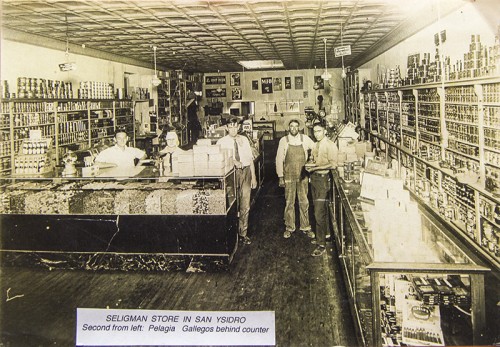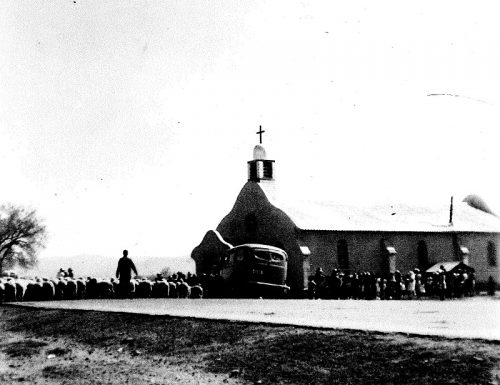
In 1699, San Ysidro was home to the family of a Juan Trujillo and a few others. The history of San Ysidro, the oldest existing settlement in the area, follows the pattern of hundreds of other Spanish villages throughout New Mexico. Eighty-seven years after the site was settled, in 1786, Governor de Anza of New Mexico awarded a land grant based on the petition of Antonio de Armenta, the senior justice and war captain of the town of Queres, and Salvador Antonio Sandoval, a soldier in the royal garrison. The San Ysidro de los Dolores Grant was 12 miles long and 2 miles wide, described in the original Spanish documents as follows: “On the north the lands of Jemez; on the south the lands of the pueblo of Zia, on the west the mountain of the Espiritu Santo Spring …; on the east the lands of Nerio Antonio Montoya which is the road leading from Cochiti to Jemez.”
San Ysidro was named for the patron saint of farmers, an 11th century Spanish saint, who is widely celebrated throughout New Mexico. He is depicted wearing blue trousers, red shirt and flat hat (a typical costume of pioneer farmers) with a plow and ox team, accompanied by an angel. The legend says the angel does his plowing while he is at prayer.
San Ysidro has long been important on the route to points west. The trail that became Hwy. 550 connected Albuquerque and Santa Fe with Cuba and other Spanish villages to the west, and on to Chaco Canyon. A man from San Ysidro is said to have been the guide for the 1849 U.S. Army expedition to Navajo country. One result of their explorations was the first written description of Chaco Canyon (now Chaco Culture National Historic Park), and the guide is said to have named the major ruins, which explains the Spanish names we know today, e.g., Pueblo Bonito, Casa Rinconada. In the late 1800s, the Star Line Mail and Transportation Company operated with mule-drawn buckboard on a route from Santa Fe that crossed the Rio Grande at Peña Blanca and continued on to Arizona. San Ysidro also was on the supply route for forts in western New Mexico and was on the main stage line to Prescott, Arizona. What was initially State Highway 44, then renamed 550 was built in 1920 and paved in 1934. In 1924 a railroad line was built from Bernalillo with the intention to add two spurs from San Ysidro. The company went broke, and the rail line was abandoned in 1941.
A post office was established in 1874.
Today the town is less than half the size of the original grant. Again mirroring a scenario that was repeated throughout New Mexico, ownership was affected by political events beyond the control of the dusty little village. In the case of San Ysidro, villagers were paying taxes on their small plots but not the commons. In 1927, the San Ysidro Land Company was formed for the express purpose of acquiring the common lands by paying back taxes. Descendants of the original owners hired lawyers and successfully defended their land, but at a cost of $12,477.71 in return for a warranty deed awarded by the government in 1936. In 1938, under the Rural Resettlement Act, about half of the eastern part of the grant was purchased by the government for Zia Pueblo. A section of the western part became a grazing district under the jurisdiction of the Bureau of Land Management.

Several historic buildings remain in San Ysidro. The Salon de Baile Historica (dance hall) was built in 1922. Some old-timers remember going by wagon to San Ysidro for the dances. The present San Ysidro Catholic Church was built after World War II. It is one of four mission churches in the area, and mass is conducted every Saturday evening.
